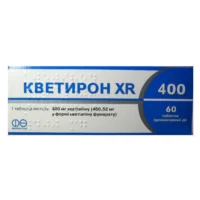Description
Adajio (Olanzapine) Coated Tablets 5 mg. №28
Ingredients
- Each coated tablet contains 5 mg of olanzapine.
Dosage
- The usual recommended dose is 5-10 mg once daily. Dosage may vary based on individual patient needs and response.
Indications
- Adajio (olanzapine) is indicated for the treatment of schizophrenia and bipolar disorder. It may also be used in combination with other medications for the treatment of depression.
Contraindications
- Do not use Adajio if you are allergic to olanzapine or any other ingredients in the product. It is contraindicated in patients with untreated narrow-angle glaucoma.
Directions
- Take Adajio exactly as prescribed by your healthcare provider. Swallow the tablet whole with a glass of water. Do not crush, chew, or break the tablet.
Scientific Evidence
- Olanzapine, the active ingredient in Adajio, is a second-generation antipsychotic with proven efficacy in the treatment of schizophrenia and bipolar disorder. Studies have shown that olanzapine is effective in reducing the positive and negative symptoms of schizophrenia and preventing relapse in patients with bipolar disorder.
Additional Information
- It is important to monitor for potential side effects such as weight gain, metabolic changes, and sedation while taking Adajio. Regular follow-up with a healthcare provider is necessary to ensure the medication’s effectiveness and safety.
Pharmacological Effects
- Olanzapine works by blocking the action of dopamine and serotonin receptors in the brain, leading to its antipsychotic effects. It also has affinity for other receptors, contributing to its broad pharmacological actions. Olanzapine’s efficacy is attributed to its ability to modulate neurotransmitter levels in key brain regions involved in mood and behavior regulation.
Clinical Trials and Comparative Effectiveness
- Clinical trials have demonstrated the efficacy of olanzapine in improving symptoms of schizophrenia and bipolar disorder compared to placebo and other antipsychotic medications. Olanzapine has shown comparable effectiveness to other commonly used antipsychotics but with a different side effect profile, making it a valuable option in the management of these psychiatric conditions.





